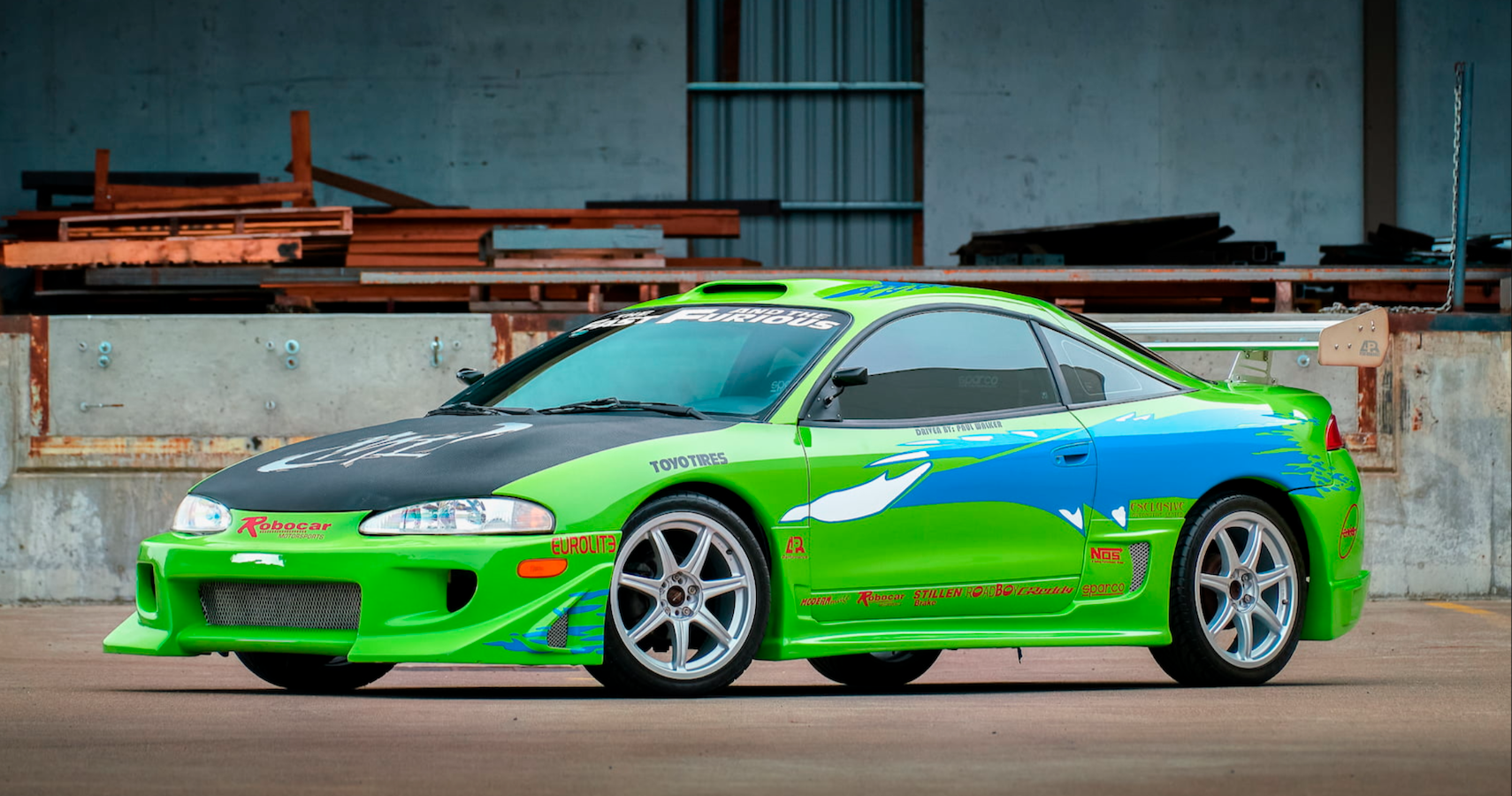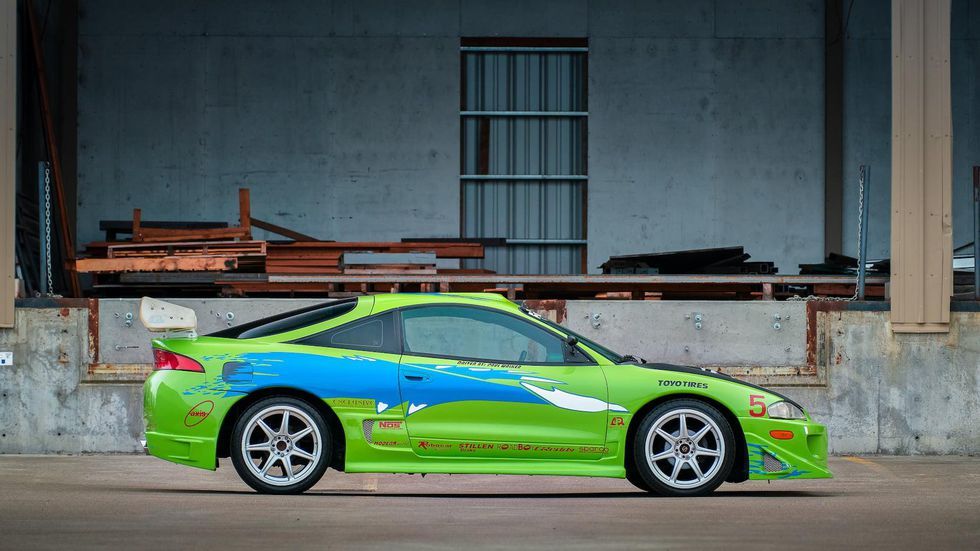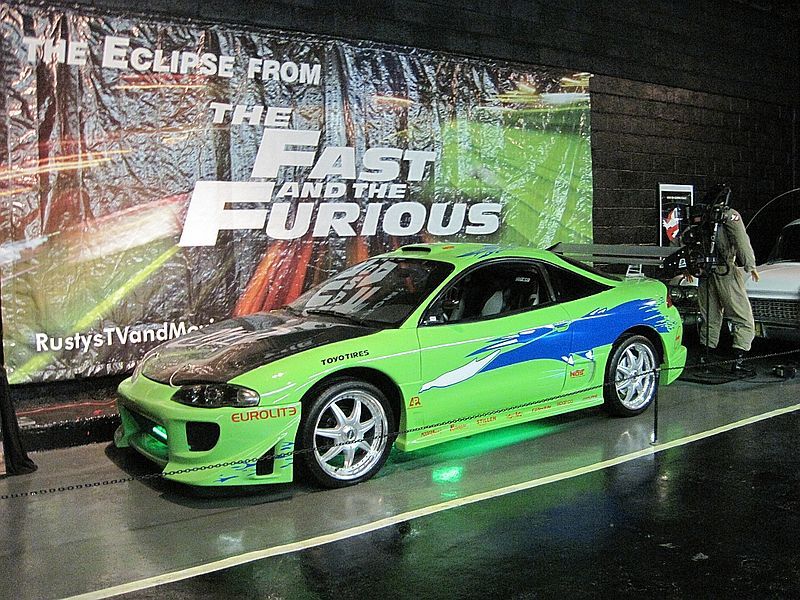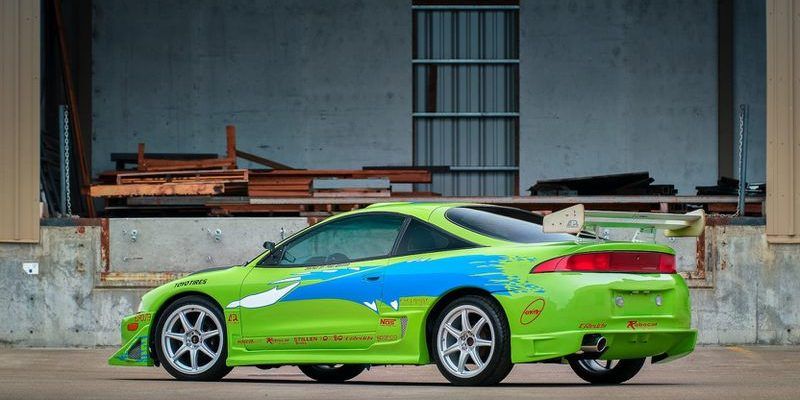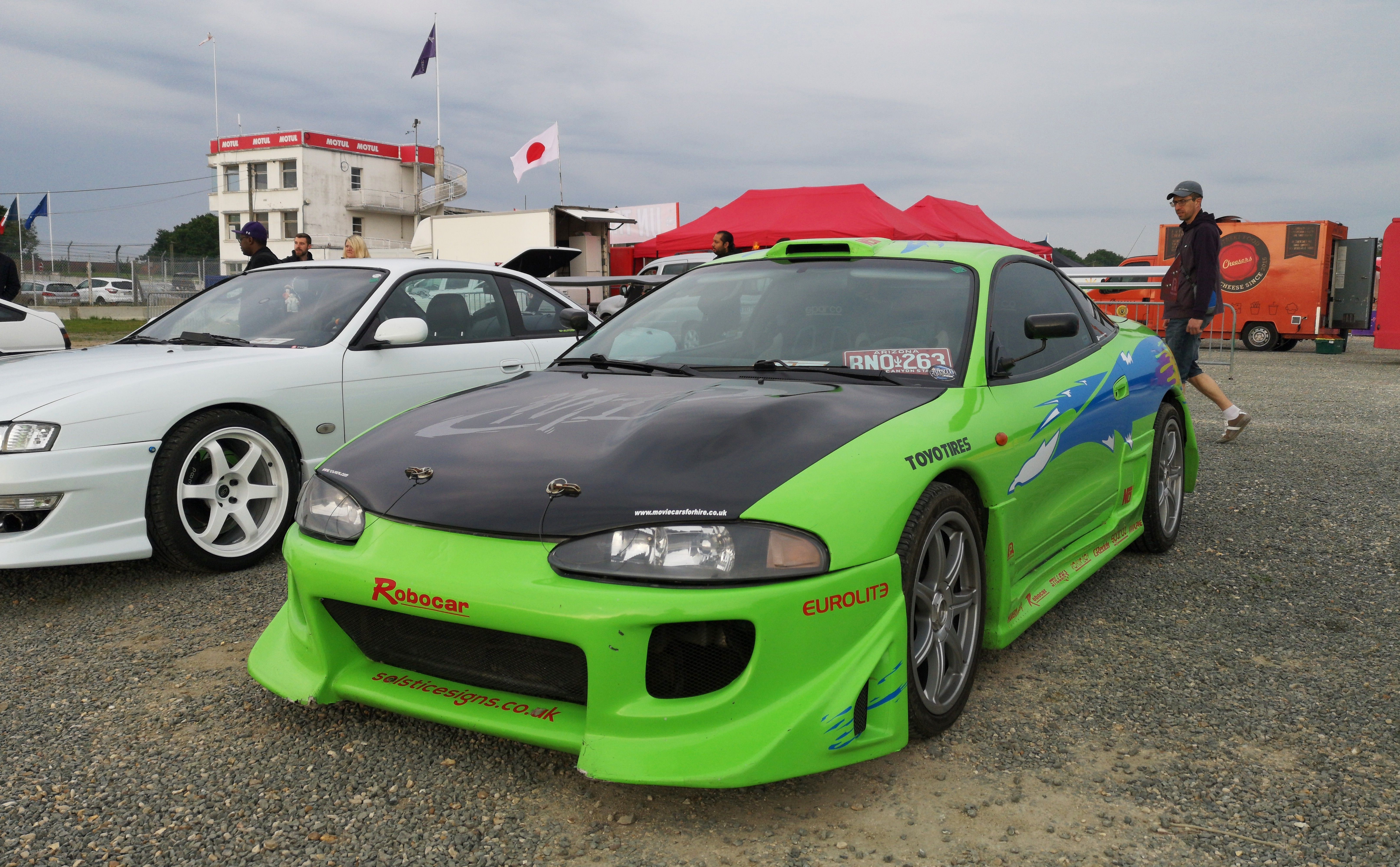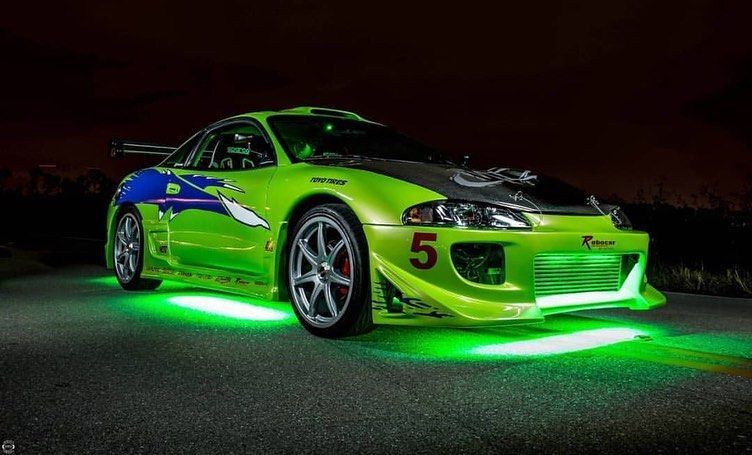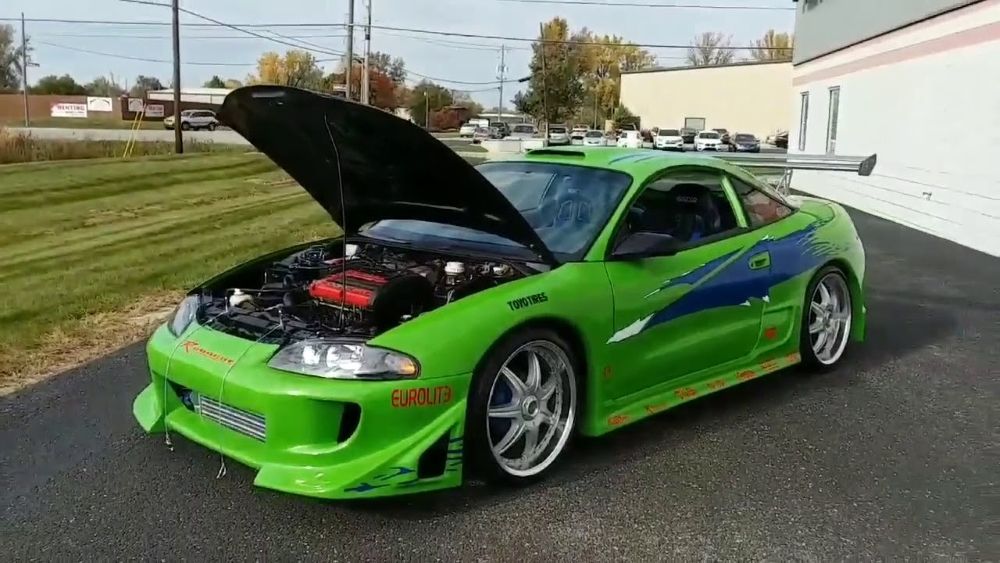Here, we're taking an in-depth look at the customized 1995 Mitsubishi Eclipse driven by Paul Walker's character Brian O'Conner in 2001's The Fast and The Furious movie. Of course, the car didn’t roll out of the factory looking like that. The customization was the handiwork of Diamond-Star Motors, a Mitsubishi/Chrysler automobile manufacturing joint-venture. They named it Diamond-Star in reference to Mitsubishi’s three diamonds and Chrysler’s Pentastar. Notably, Diamond-Star is now Mitsubishi Motor Manufacturing of America, Inc (MMMA).
Back to Brian O'Connor's Eclipse, we aren't surprised that cars connected to Paul Walker command some furious price tags at the market. Take this 1995 Mitsubishi Eclipse, for instance. Can you believe that this low-born, 2nd-gen Eclipse was sold for a mouth-watering $170,500 at a Mecum Auction in January 2022, more than 20 years after playing a minor role in the Fast and Furious movie?
Our point here is you can get this same car in great overall condition for around $7,000. But when one comes with a tagline that says, “Featured in 'The Fast and the Furious," you'll have people bidding way above the average price. Here’s what you need to know about this iconic movie car.
The 1995 Second-Generation Mitsubishi Eclipse: A Brief Overview
Let's start by retracing to the origin of the 1995 Mitsubishi Eclipse. The Eclipse nameplate was a sporty compact car manufactured by Mitsubishi Corporation between 1989 and 2011. Four generations of the Eclipse were produced as 3-door liftback coupes and 2-door convertibles. The convertible variant came much later during the 1996 model year. The 2012 Mitsubishi Eclipse was the last of the Eclipse bloodline.
Brian O’Conner’s 1995 Eclipse fell in the second-generation models that shared platform and parts with the rebadged Eagle Talon and Plymouth Laser captive imports. That’s because Mitsubishi built the 1st- and 2nd-gen Eclipse during the Diamond-Star Mitsubishi-Chrysler automobile manufacturing partnership. Mitsubishi said the Eclipse was named after an undefeated 18th-century English racehorse that had won 26 races.
The 2nd-gen Eclipse got a facelift in 1994 for the 1995 model year. The changes - both cosmetic and powertrain - were focused on penetrating a broader market, not a departure from the original target market of the 1st-generation Eclipse. This generation produced the 1996 Eclipse Spyder convertible variant with GS and GS-T trim levels. The Spyder GS-T trim got a turbocharged 2.0-liter 16-valve DOHC 4G63 (Mitsubishi Sirius) engine that could make 210 horsepower and 214 lb-ft of torque.
The Spyder GS-Ts were the only turbocharged Eclipse while the others, including Brian O'Conner's 1995 Mitsubishi Eclipse, were powered by two different naturally aspirated inline-4s (a 2.0-liter 140-hp 420A Chrysler engine and a 2.4-liter 141-hp AG64 Mitsubishi Sirius engine), depending on the market. Specifically, Brian’s was the base model 1995 Eclipse RS powered by the 140-hp 2.0-liter 16-valve DOHC Chrysler 420a engine with 130 lb-ft of torque.
These were the U.S. version of the Eclipse offered with RS and GS trim. Interestingly, the Eclipse that ended up as one of Paul Walker’s ride in the Fast and Furious movie wasn't even a top-range 2nd-gen Eclipse. That honor goes to the turbo-rated GS-T and, of course, the AWD GSX.
So, the 140-hp Eclipse RS could never have stood a chance against Torretto’s Mazda RX-7, despite the DSM customization using 2001 technology and parts. Regardless, this particular car has an interesting story to tell.
The True Story Of Brian's Mitsubishi Eclipse From The Fast And The Furious
As always, Craig Lieberman is an excellent and reliable source for all things "Fast and Furious," especially the cars that made appearances – big and small – in the movies. This is particularly important because even Lieberman admits most of the information floating around about this car – Brian's 1995 (1996, actually) Mitsubishi Eclipse aren't factual.
So, why listen to Lieberman? Because he served as Technical Advisor for the first two Fast and Furious films, and he also was the owner of the 1994 Toyota Supra MK IV, the 1999 Nissan Skyline GT-R R34, and the 1999 Nissan Maxima (A32) used in the first two films.
Notably, there were actually six Eclipses involved in the movie shoot, including the hero car painted in bright green and laden with decals and graphics (Hero car 1). By saying hero cars, we're referring to the principal car used while shooting scenes that involve the main actors (not for the stunt drivers). Hero cars have the “showpiece” paint job, interior, engine mods, etc.
So, the hero Eclipse is the one Brian drove earlier on in the movie, trying to familiarize himself with the car in the Dodger Stadium parking lot. Yeah, we watched him redline the engine, with the speedometer clocking past 150 mph. But as Lieberman confirms, this was actually one of the few authentic aspects of the movie car. Most other stuff about it – features, powertrain, and events – were, of course, as fake as they can be.
At least we enjoyed seeing the car suddenly burst into a huge spin before stopping just inches from the roadside barrier at the Dodger Stadium parking lot tryout. John Lapid is the owner and builder of the Eclipse hero car no.1. Lapid showed up with the car painted in silver at the F&F casting call. It wasn't the ideal Eclipse (performance-wise), but it was the only Eclipse to show up, so Lieberman went for it.
They just had to spruce it up to look like a high-power tuner car that could take on Torreto’s (Vin Diesel) RX-7. A glaring instance is the fake nitrous kit. The producers banked heavily on most moviegoers not knowing the difference. But the movie ended up drawing large followings of gearheads, the kind of people who know a 3-stage nitrous kit is ideal for dedicated big engine race cars or big turbo cars.
More so, Brian's Mitsubishi Eclipse was neither turbo nor AWD. So, even a hundred-stage nitrous kit couldn't have helped its course. In other words, it's only in a movie that the Eclipse could challenge the RX-7. According to Lieberman, they just subjected the car to some basic bolt-on mod, at the end of which it got an extra 10 horsepower at best. Today, Brian’s Eclipse is one of the most loved cars in the franchise as well as one of the most replicated, with an estimated 50 known replicas globally.

